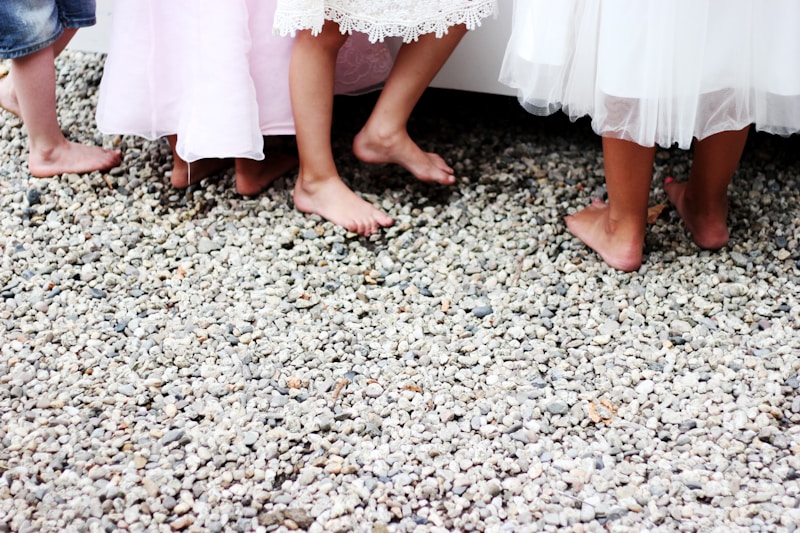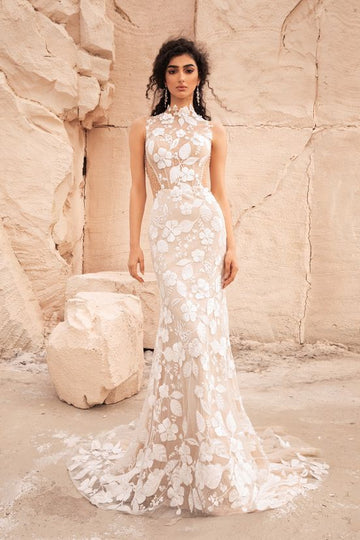Designing for Every Body: Considering Bridal Body Types in Wedding Dress Design
Designing for Every Body: Considering Bridal Body Types in Wedding Dress Design
Understanding Bridal Body Types
When planning a wedding, one of the most significant factors to consider is the bridal gown. A wedding dress is not just a piece of clothing; it's a symbol of love, commitment, and personal style. However, not all body types are the same, and this is where understanding how to design for various bridal body types becomes essential. In this article, we will explore how designers can create stunning gowns that flatter every silhouette, ensuring that all brides feel beautiful and confident on their special day.
What Are Bridal Body Types?
Bridal body types refer to the different shapes and sizes of brides, which can greatly influence the design and fit of a wedding dress. Common bridal body types include:
| A-Frame | This body type features a narrower waist and wider hips. It is often characterized by a well-defined waistline. |
| Apple Shape | This type has a fuller bust and waist with thinner legs, requiring designs that can create balance. |
| Hourglass | This classic shape showcases a balanced bust and hip measurement with a defined waist. |
| Rectangle | Brides with this body type have a straight figure with little definition in the waist. |
| Pear Shape | This type features narrower shoulders and wider hips, so fit-and-flare silhouettes can be particularly flattering. |
Factors to Consider in Design
When considering bridal body types in design, several factors need to be taken into account:
- Silhouette: The overall shape of the dress plays a crucial role in how the garment will complement different body types.
- Fabric: The choice of fabric can affect the drape and overall feel of the dress. Lighter fabrics may be suitable for certain types, while heavier fabrics can provide structure.
- Neckline: Different necklines can enhance or diminish features based on the body type. For instance, V-necks elongate the neck, which is flattering for most shapes.
- Embellishments: The use of beading and lace can draw attention to specific areas, which must be considered based on the bride's body type.
Bridal Body Types and Design Strategies
Each bridal body type has its unique characteristics, meriting specific design strategies to enhance the bride's figure. Here are some effective suggestions:
A-Frame Body Type
Brides with an A-frame body type should opt for dresses that emphasize the waist and flow out from the hips. A-line dresses work exceptionally well, as they create an elongated silhouette without clinging to the hips. 
Apple Shape
For apple-shaped brides, it's crucial to choose dresses that offer coverage and define the waist without adding bulk. Empire waist dresses with flowing skirts can work wonders, as they draw attention away from the midsection while still providing sophistication. Consider fabrics that offer some structure to enhance the overall look.
Hourglass Figure
Hourglass-shaped brides are lucky in that most styles will typically work for them. However, to accentuate their curves, design options like mermaid gowns or fitted bodices with flared skirts can truly highlight their natural figure.
Rectangle Body Shape
To create curves for rectangular body types, brides should consider dresses with ruffles, bows, or other volumizing elements that create the illusion of an hourglass shape. A ball gown style can also add the desired volume and shape.
Pear Shape
Pear-shaped brides often wish to draw attention to their upper body while minimizing the appearance of their hips. This can be achieved with dresses that have embellished bodices, such as off-the-shoulder or boat necklines, while choosing A-line skirts that gracefully flow away from the hips.
Finding the Perfect Wedding Dress
Finding the perfect wedding dress that fits beautifully and enhances your body type can be a joyous experience. Here are some tips to help simplify the process:
- Schedule a fitting with a skilled bridal consultant who understands your body type.
- Bring supportive undergarments to help you visualize how different designs will fit your body.
- Don't shy away from trying on different styles—what you may not expect to like might surprise you!
- Make use of online resources and social media for inspiration tailored to your body type.
The Importance of Personal Style
While body type is crucial in designing a wedding dress, personal style is equally important. It's essential for brides to feel like themselves on their big day, regardless of trends or expectations. A few considerations for reflecting personal style in the design include:
- Choosing colors that resonate personally, whether traditional white, soft pastels, or vibrant hues.
- Incorporating elements from cultural or familial traditions.
- Adding customization through details such as embroidery, beading, or unique patterns.
Conclusion
In conclusion, considering bridal body types in design is a fundamental aspect of creating bespoke wedding dresses that cater to the individuality of every bride. By understanding the nuances of each body type and applying design techniques that enhance and flatter, designers can ensure that every bride walks down the aisle radiating confidence and beauty. Remember, the right wedding dress is one that reflects not only your body type but also your personal style, making your special day even more memorable. When searching for the perfect dress, take your time, seek professional advice, and always prioritize how you feel in whatever you choose. Happy wedding planning!
